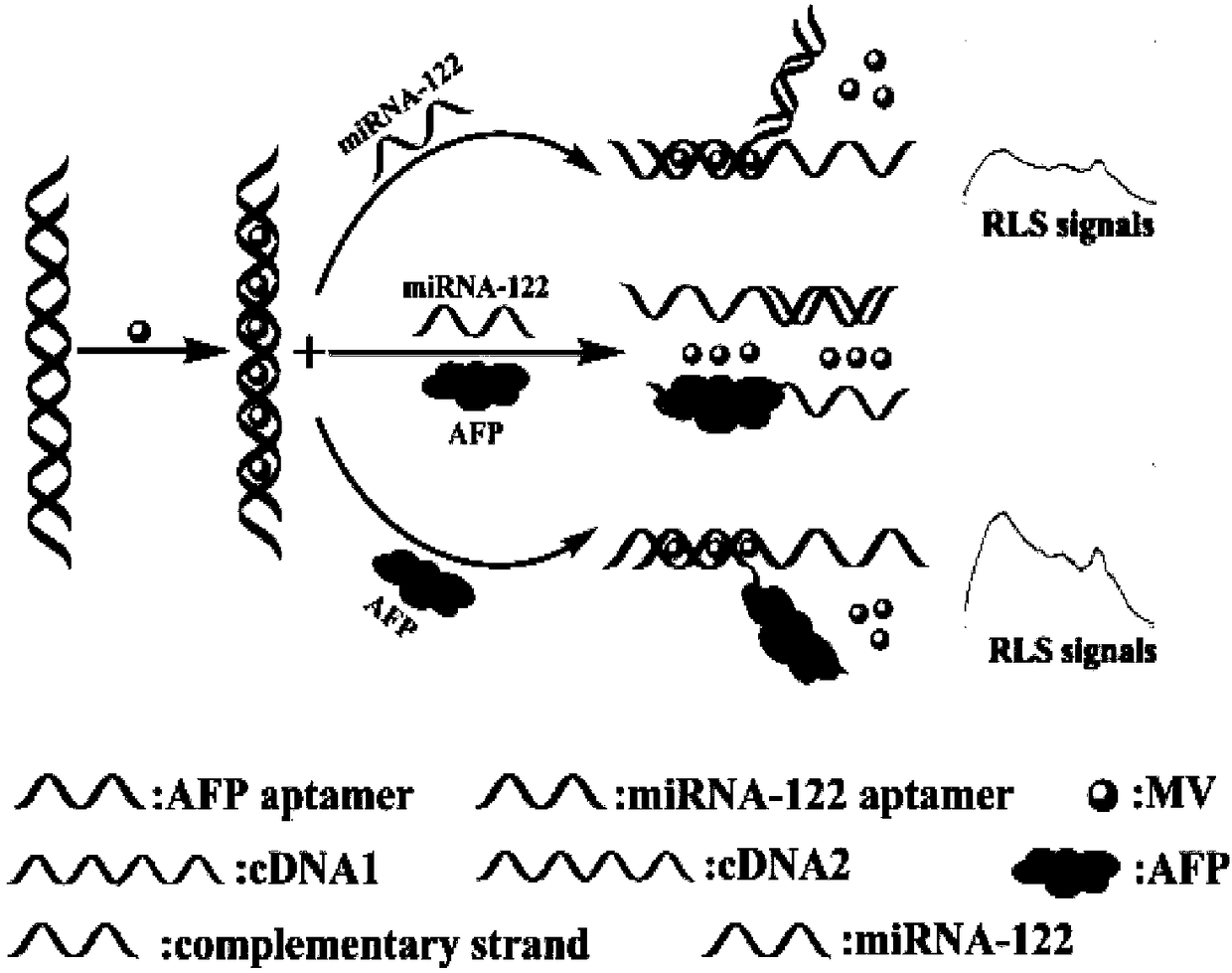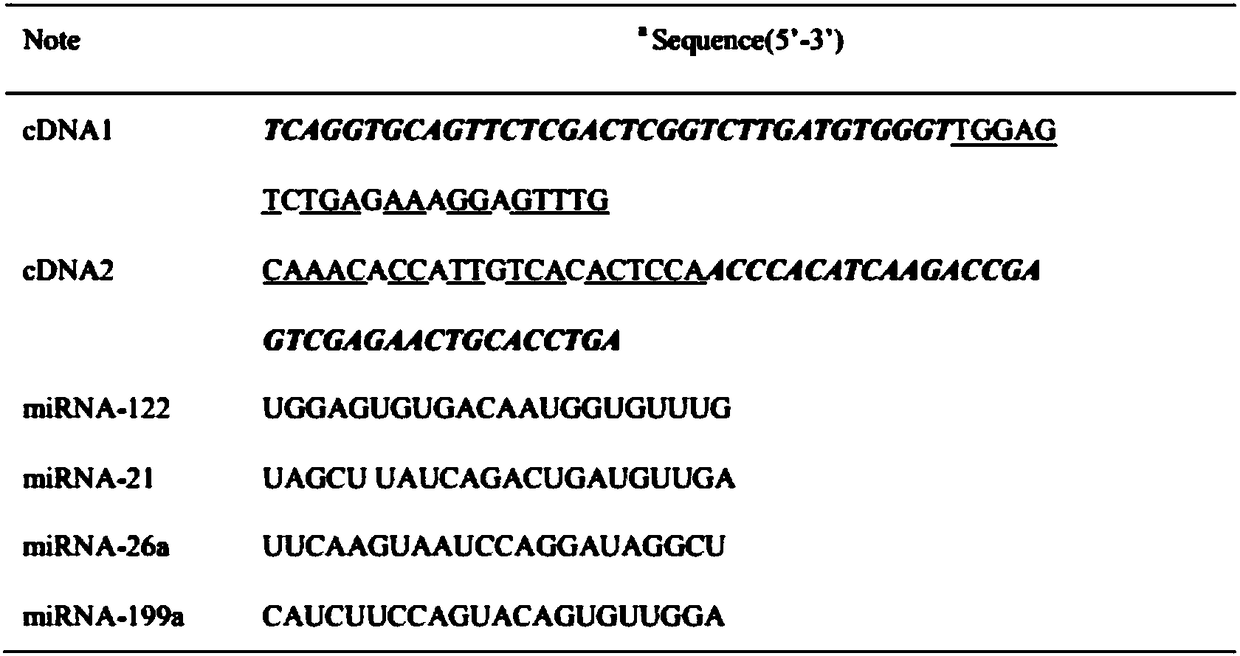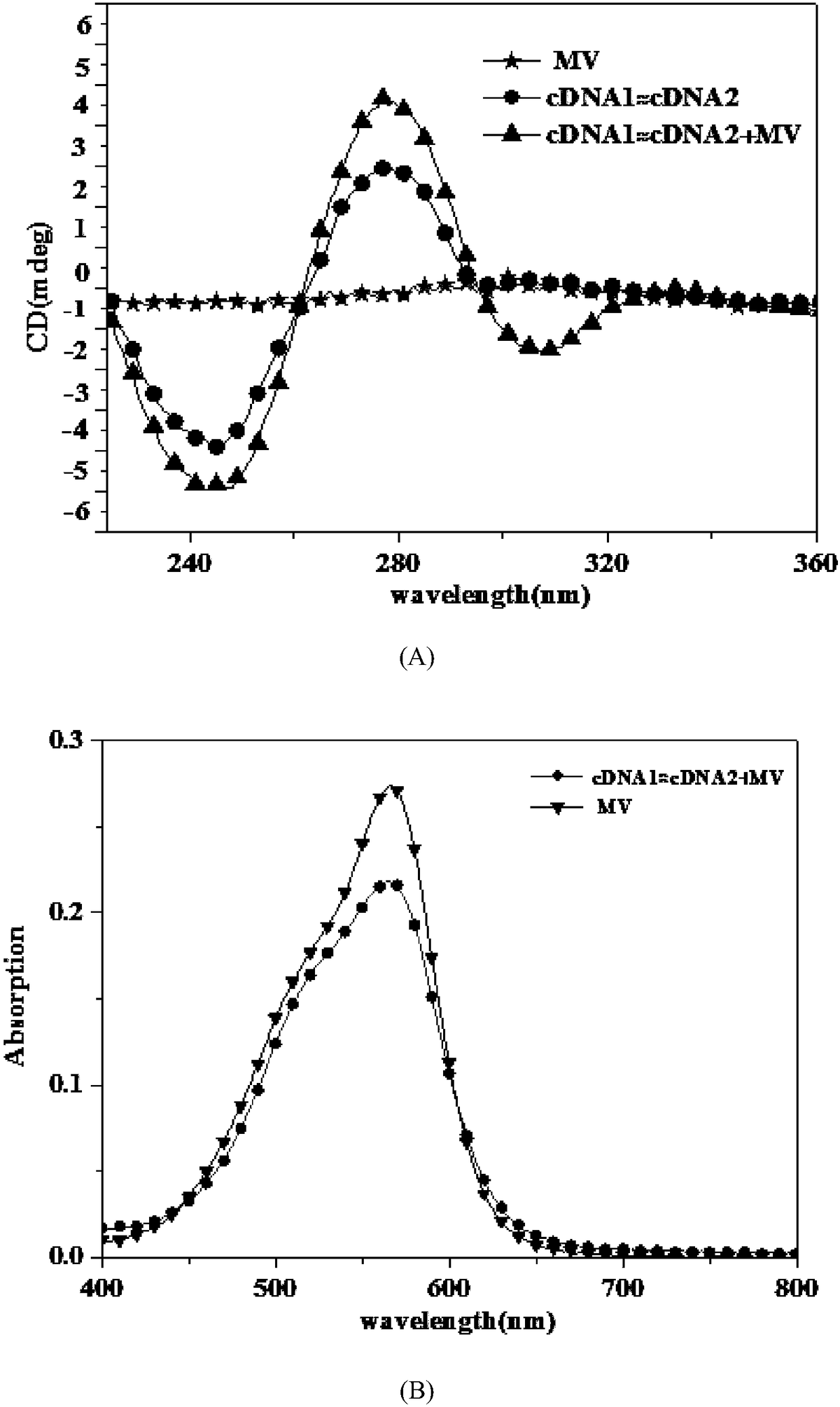Biosensor for simultaneously detecting AFP (Alpha Fetoprotein) and miRNA-122 through resonance light scattering and preparation method of biosensor
A resonant light scattering and sensor technology, applied in biochemical equipment and methods, scattering characteristic measurement, biological material analysis, etc., can solve the problems of long detection time and high detection cost, and achieve high sensitivity, good response, and low cost effects
- Summary
- Abstract
- Description
- Claims
- Application Information
AI Technical Summary
Problems solved by technology
Method used
Image
Examples
Embodiment 1
[0037] Design of the detection probe system of the dual-function label-free sensor in the detection of tumor markers based on resonance light scattering technology:
[0038] The system includes two probes cDNA1 and cDNA2, each probe contains two parts, for the cDNA1 probe, near the 5' end is the AFP aptamer sequence, and near the 3' end is the partial complementary sequence of the miRNA-122 aptamer ; For the cDNA2 probe, it includes two parts: the partial complementary sequence of the AFP aptamer near the 5' end, and the miRNA-122 aptamer sequence near the 3' end;
Embodiment 2
[0040] Feasibility determination of dual-functional label-free sensors based on resonance light scattering technology in tumor marker detection probes:
[0041] (1) RLS determination of AFP and miRNA-122
[0042] cDNA1 and cDNA2 (1.0 nM) were added to 10 mM Tris (pH 7.4). DNA hybridization was performed at 40° C. for 40 minutes, and then 2.7 μM methyl violet (MV) was added to the solution to obtain a cDNA1cDNA2-methyl violet (MV) complex. Next, different AFP and miRNA-122 concentrations were added to the solution. The aptamer binding reaction was carried out at 40°C for 30 minutes. Finally, the RLS spectrum of the resulting reaction solution was obtained by synchronously scanning the excitation and emission monochromator (λex=λem) from 220.0 nm to 700.0 nm with an RF-5301PC fluorescence spectrophotometer (Shimadzu, Japan). Excitation and emission slit widths were kept at 3.0 nm.
[0043] (2) Circular dichroism (CD) spectrometry
[0044] Spectra were measured in the wavele...
Embodiment 3
[0051] The dual-function label-free sensor based on resonance light scattering technology is optimized in the detection method of tumor markers: the detection efficiency of this method is affected by factors such as methyl violet (MV) concentration, reaction time and working temperature, in order to obtain the best detection Performance, optimized assay detection conditions such as methyl violet (MV) concentration, reaction time and operating temperature. Through optimization, the best experimental conditions were obtained: the concentration of methyl violet (MV) was 2.7×10 -6 M; the reaction time is 30 minutes; the optimum reaction temperature is 40°C.
PUM
 Login to View More
Login to View More Abstract
Description
Claims
Application Information
 Login to View More
Login to View More - R&D
- Intellectual Property
- Life Sciences
- Materials
- Tech Scout
- Unparalleled Data Quality
- Higher Quality Content
- 60% Fewer Hallucinations
Browse by: Latest US Patents, China's latest patents, Technical Efficacy Thesaurus, Application Domain, Technology Topic, Popular Technical Reports.
© 2025 PatSnap. All rights reserved.Legal|Privacy policy|Modern Slavery Act Transparency Statement|Sitemap|About US| Contact US: help@patsnap.com



